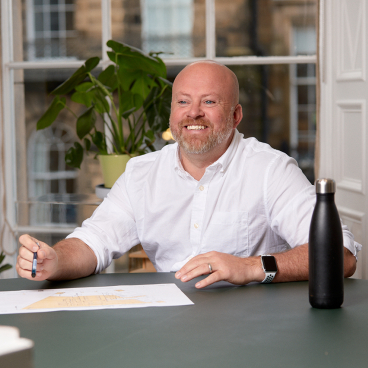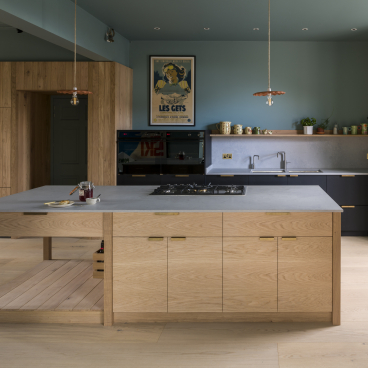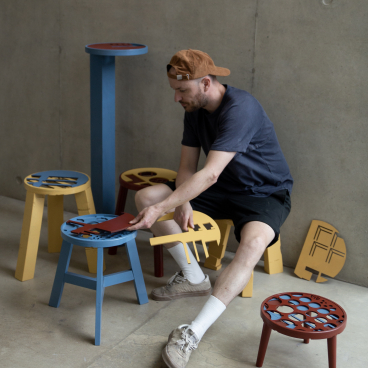How it’s made: Factory tour at Muraspec, Kent.
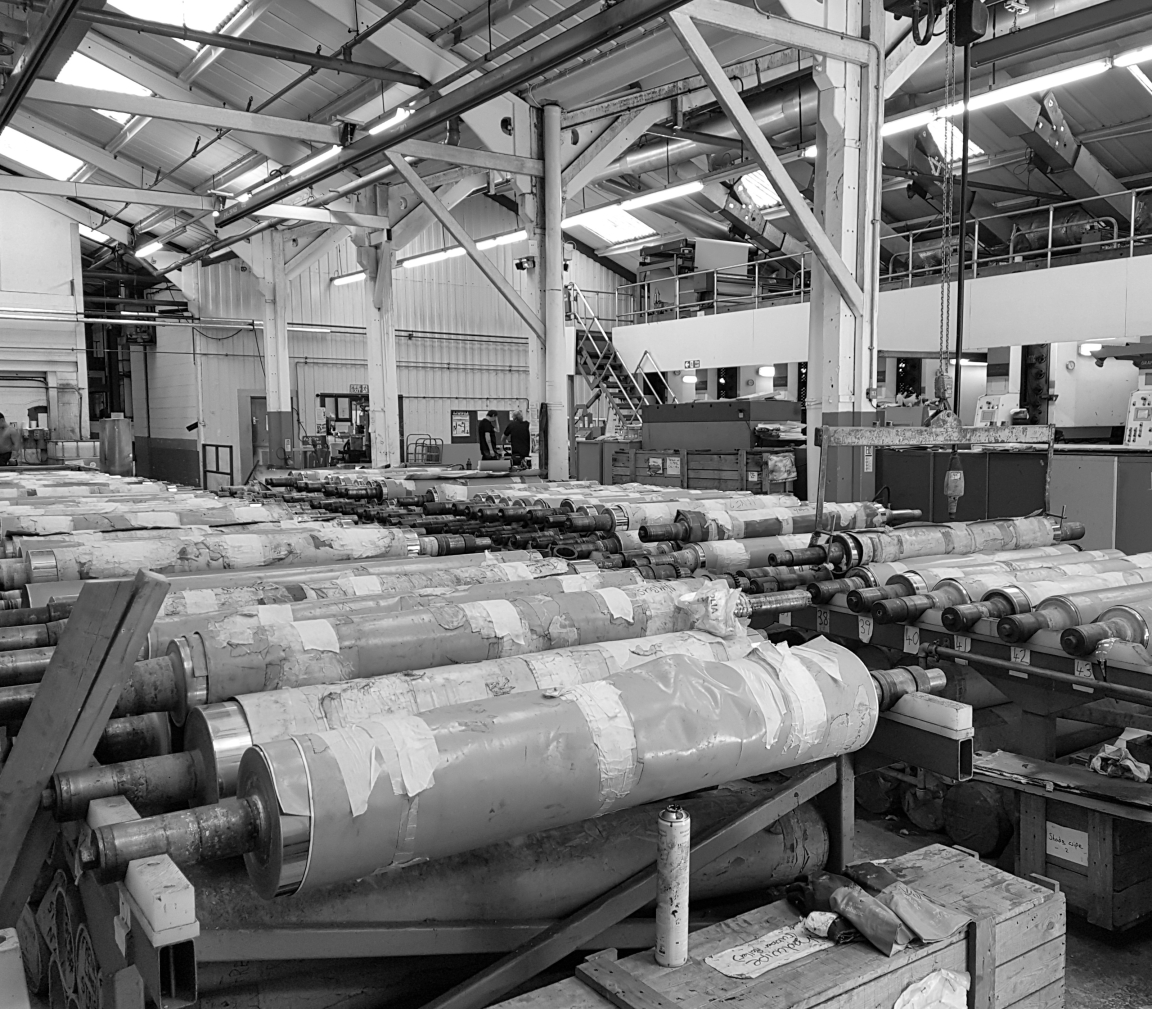
For built environment professionals, is there anything better than a factory tour? We think not.
It’s the best way to really get under the skin of a brand, to truly understand how a product is made. And what it’s made from.
With this in mind, when our Studio partner Muraspec invited us for a tour of its factory in Kent, we immediately said yes. Founded in the 1850s, Muraspec is a leading international designer and manufacturer of carefully crafted wallcoverings. All of its design and production processes are done in-house. It’s a true UK manufacturer with exemplary skill, passion and dedication applied to all that it does.
The majority of the factory and HQ workforce are long-standing, with many having been with Muraspec for 40 years plus. And when visiting, it’s not difficult to see why. There’s a warm, welcoming atmosphere and a genuine pride that emanates from every project team. When visiting we were lucky enough to meet a fantastic cross-section of the Muraspec community, starting with Steve Luke, finance director, and Kumari Hiniduma, marketing manager.
This was followed by a factory tour with Martin Delves, production manager, and catch ups with Matt Hayes, design studio & product manager, John Langfield, design process & digital manager, and Nicola Searing, CAD & digital, who each explained the detail behind the process to offer a rounded picture of how Muraspec products are made. Here, we share a whistlestop tour through design, printing, and production.
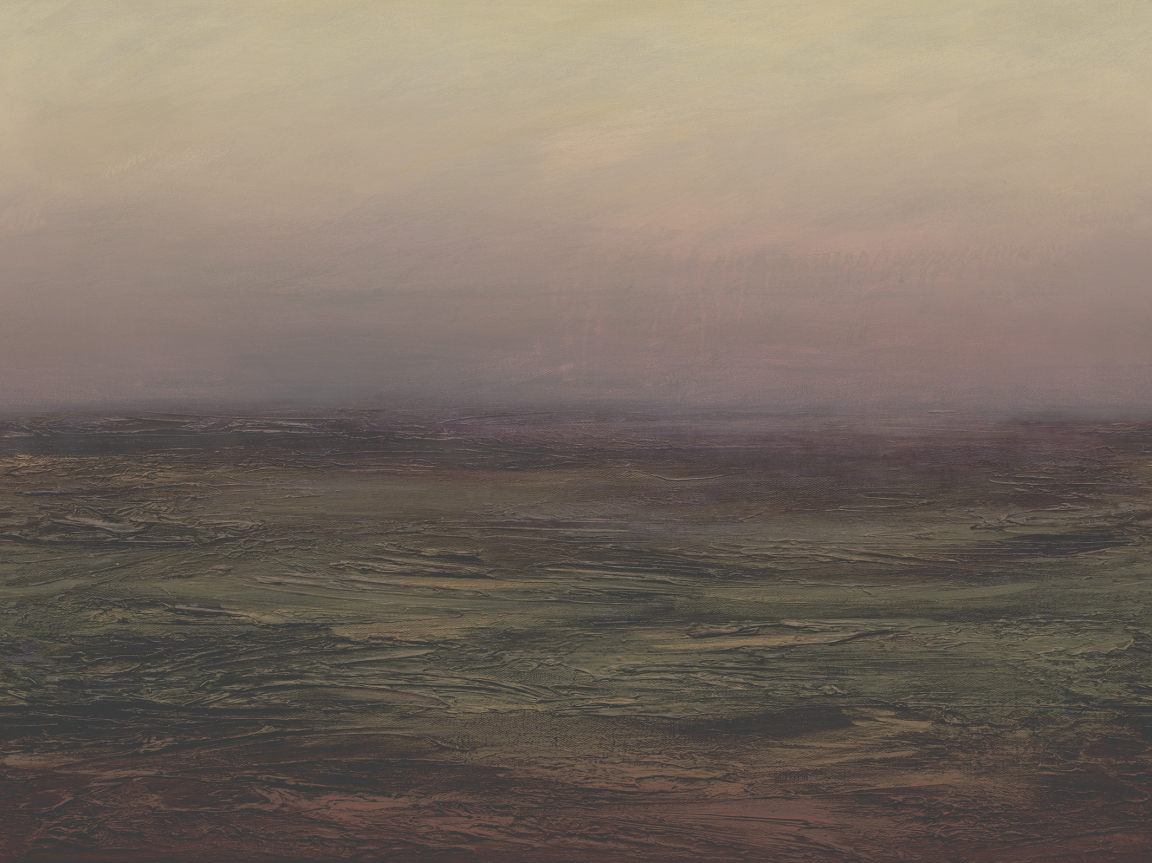
Scenics-LTD02521
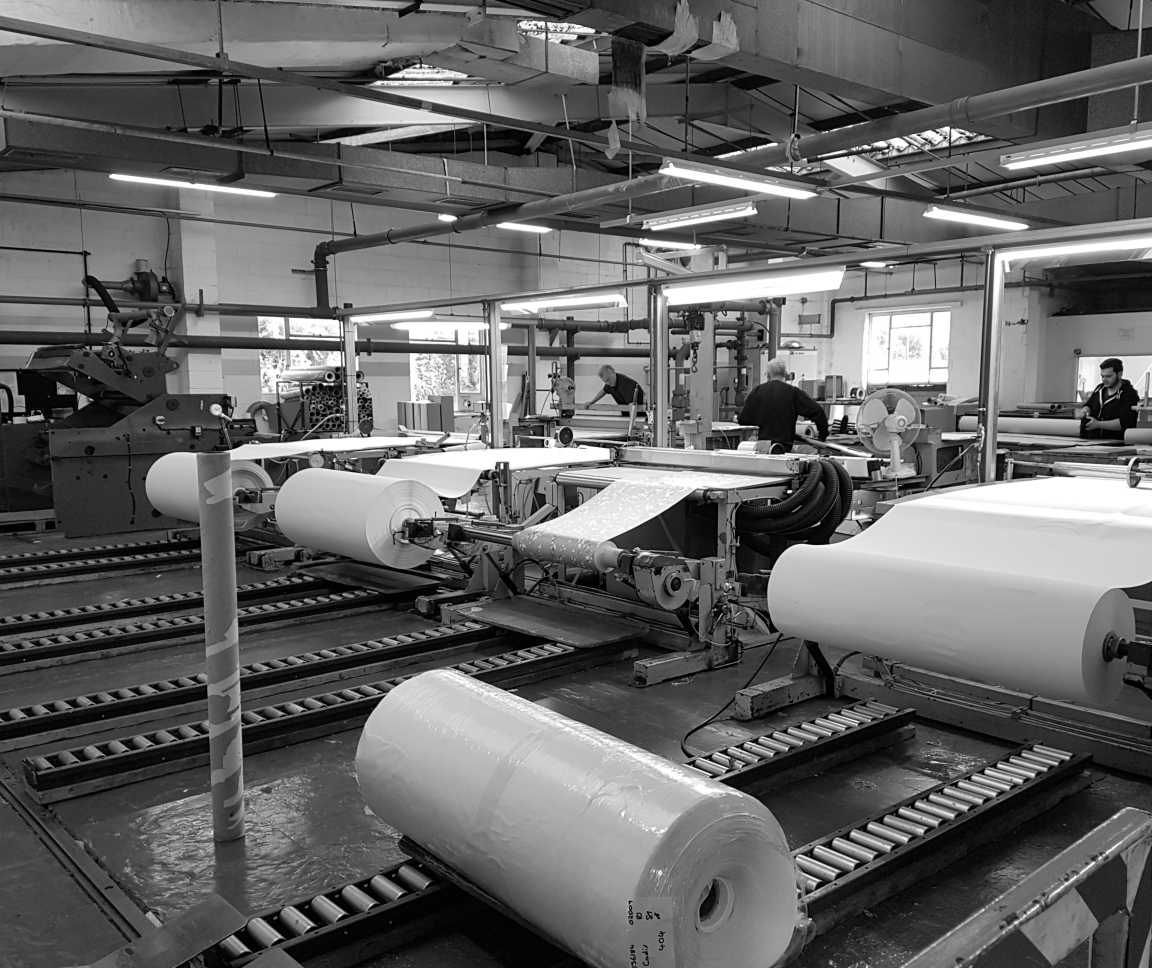
Factory & machinery
Muraspec has over 3,000 stocked items and, in addition, a large number of products are made to order, with a minimum of 350 metres. Two shifts are operated – 16-hours per day, five-days per week to ensure a quick and efficient turnaround of 10 days or less.
The mixing room – situated within the oldest part of the building – is where the production process begins. Two different mixing blends are created, wet and powder for different production substrates. In line with its commitment to sustainability, up to 30% of Muraspec’s woven and non-woven products contain recycled content.
Martin explains the PVC mixing process in detail for different manufacturing coating lines, the colour matching regime and the link with quality control. During the coating, various emboss heads are used to apply textures. Due to its extensive coating facility, Muraspec is also an important member of the British Coatings Federation (BCF).
The factory has different printing processes ranging from Gravure and screen, to the technically advanced digital print machines.
Every product that leaves the factory is subject to inspection for quality control. “We inspect all product by eye – there’s human interaction at every stage of the process”, comments Martin.
Muraspec also has an in-house recycling facility for sustainability, and an in-house engineering department to maintain the vast array of machinery.
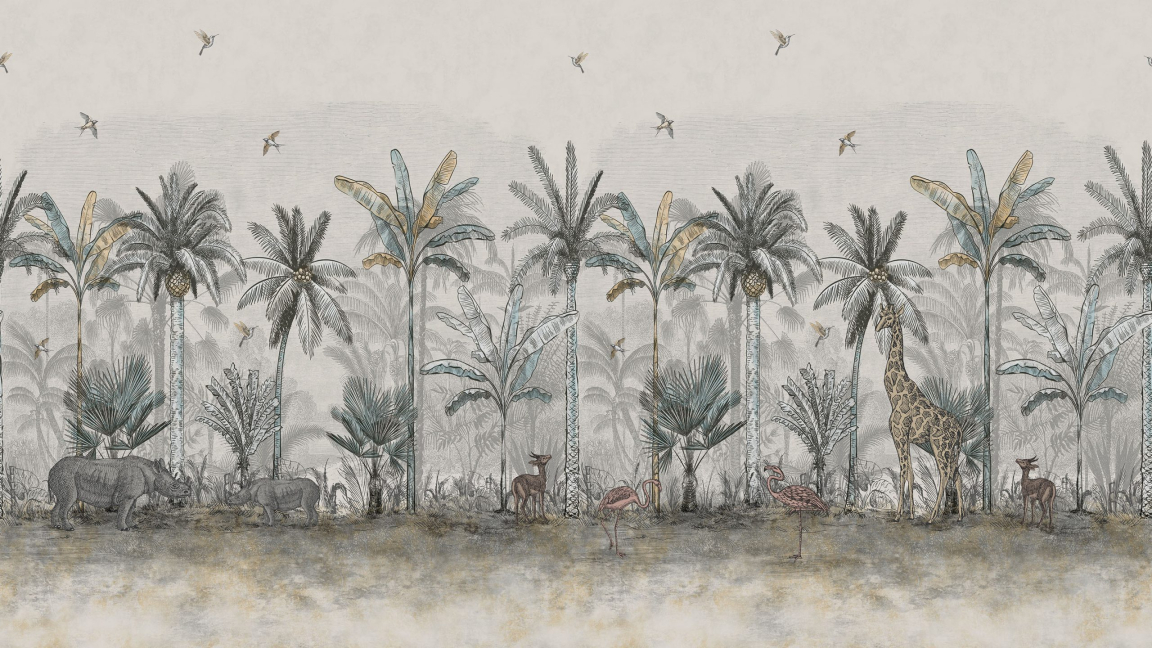
Scenics-LTD02540
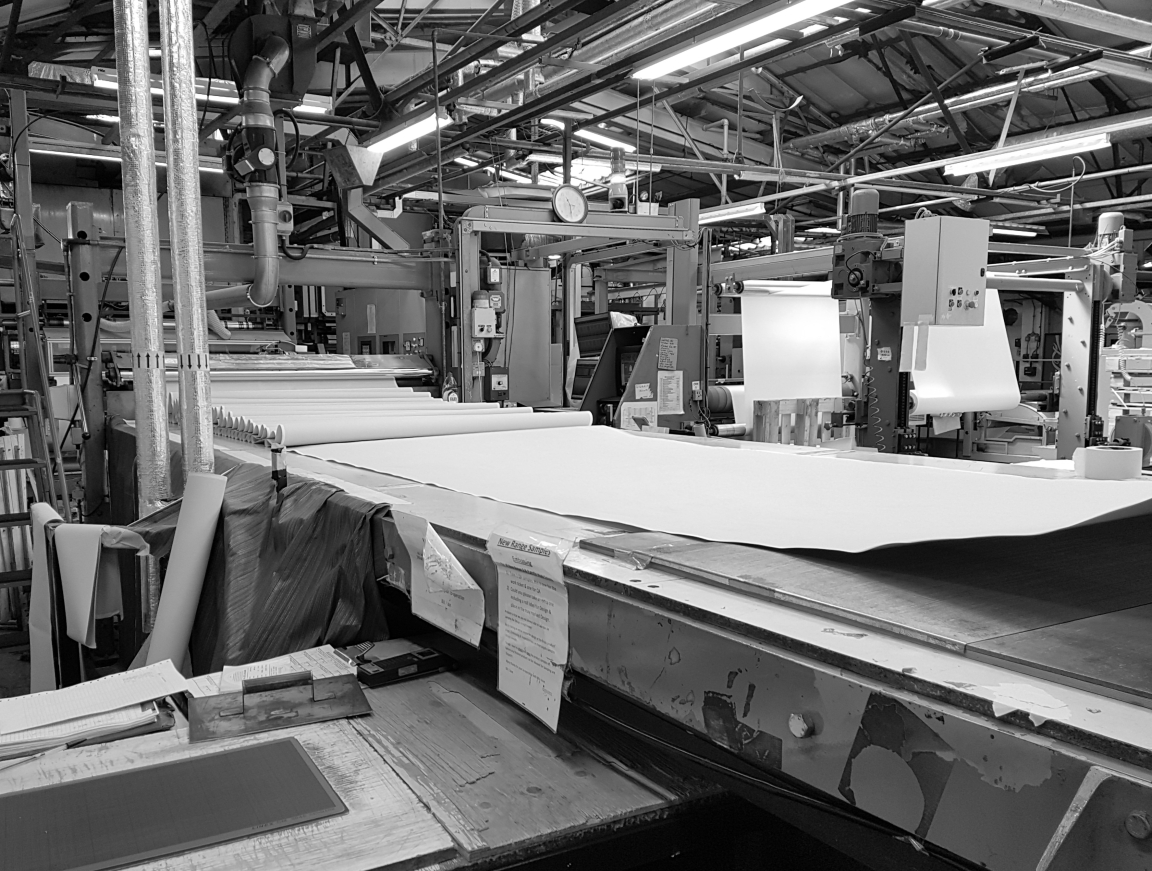
Aesthetics & design
With most products made to order, and a bespoke digital printing service, we were keen to understand more about the design process. Matt Hayes, design studio & product manager, filled us in. He began his career as a design colourist, and progressed to take charge of his current remit which includes design, development, processing, and materials.
Muraspec offers over 3,000 different products in total. And that’s not to mention the bespoke offering. Though while designers love it when they can put their mark on the product, isn’t it costly and timely?
Matt explains, "At Muraspec, our minimum run sizes are smaller using lean techniques. This keeps the investment levels at a manageable level. However, if there is a business case or design requirement, we always invest to stay ahead as market leader. We observe global trends, receive feedback from clients and review gaps in the market when designing new products."
So, how are wallcoverings predominantly used by clients in their commercial settings? According to Matt, feature murals remain popular, especially in sectors such as hospitality, and wallpaper is increasingly used on ceilings. And the key colours? Current trends are greens, and rusty reds such as Burnish, a wallcovering launched in response to the copper trend a few years back and that’s been popular ever since.
The process of crafting wallcoverings is quite traditional, will it ever change?, we asked. “From our point of view, it’s about securing longevity and delivering good quality product”, says Matt, “plus meeting regulations such as fire – all of our products are fire rated to the highest standard.
“We like it when customers visit the factory because they can see what goes into our products”, Matt adds.
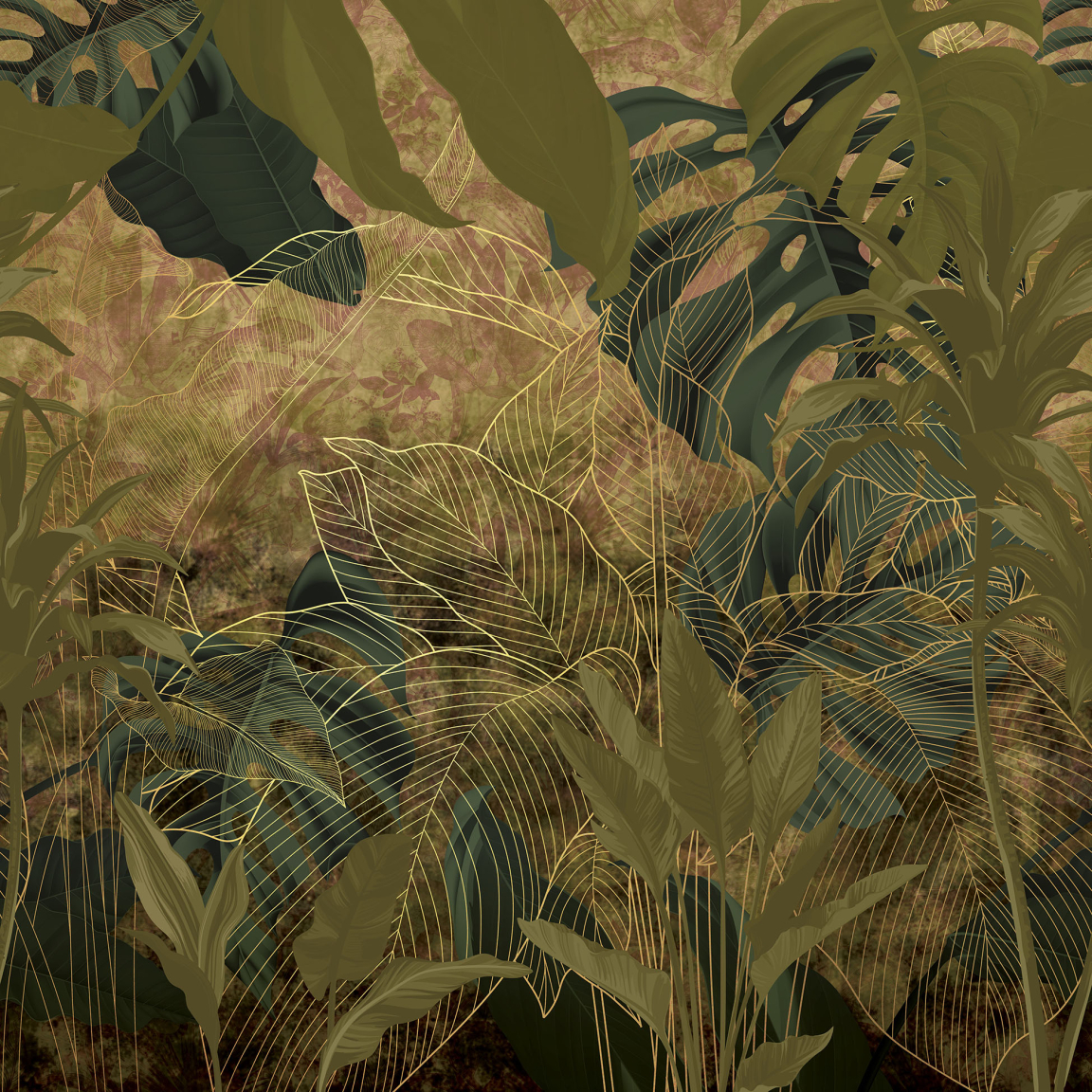
Florals & Botanics-LTD02590
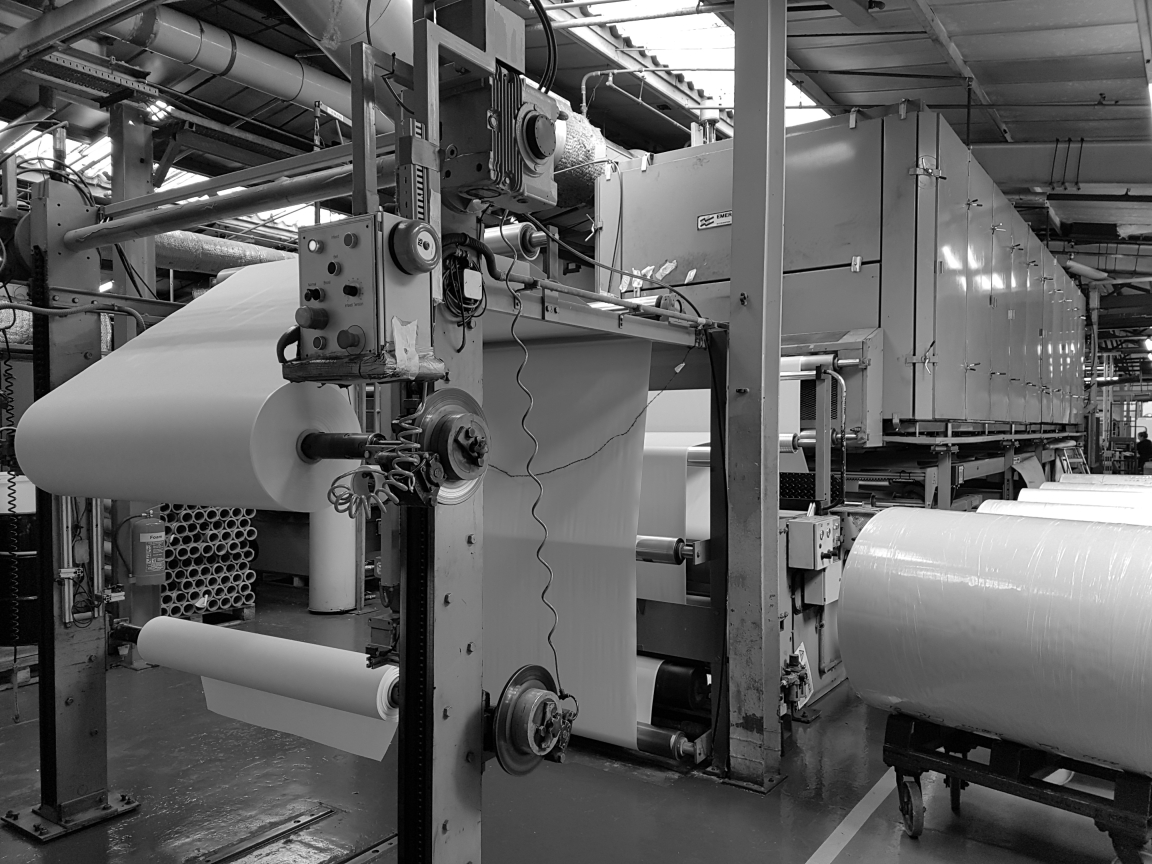
Digital development & printing
Next we met John Langfield, design process & digital manager, and his CAD & digital team. “We offer excellence in design creation, interpretation of client briefs and top-quality printing, customer support and after-sales – it’s a full service", he explained.
Part of what the design team at Muraspec offers within its bespoke service is to work with designers to create artwork that may be inspired by an image, or a specific colour, or pattern. That’s where their expertise comes in, and their creativity can fully be unleashed.
From receiving the brief to designing the finished product for clients, the turnaround can be as quick as a matter of hours. With the type of design required to mirror a specific aesthetic or capture a particular theme or mood takes skill, time and dedication.
“We now have full control over our cylinders, and we can manage colourways. One of our USPs is that we have the studio and the factory. And we’re entirely UK based. We offer whole solutions, either stock-based standard or digital bespoke wallcovering solutions.”
In terms of technology, how will AI impact? The team say it’s something they have started to explore and will embrace as it evolves - "AI in the near future will help in speeding up processes and will potentially give CAD designers the freedom to be much more creative."
A huge thanks to all the Muraspec team for taking the time to show us around the factory. Would you like to see the factory for yourself? Book your tour. You can also discover more of Muraspec’s product by visiting Material Source Studio Glasgow.


